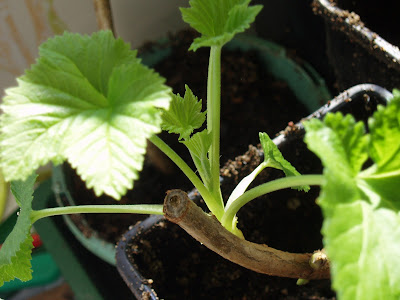On a recent trip to Nyngan teaching I made the realisation that the landscape as a whole was regenerating... I was out looking at trees on farms from a biodiversity and Aboriginal cultural heritage viewpoint. It is the old trees in he landscape that might hold the
scars of Aboriginal occupation and of course it is also these old trees that are full of hollows that are so critical to the survival of many
hollow dwelling animals in our landscape - but I could not find them in the landscape.
On close inspection of the paddock trees I soon came to the realisation that nearly every tree in the landscape had been ring barked or cut and was in fact a multi stemmed regrowth tree.
Here you can see the original tree that has died and the two new shoots that have regrown to give a multi stemmed or coppiced tree.
Once you start looking closely at trees across the landscape you begin to realise that they are all growing back multi stemmed after being ring barked or cut off years ago.
Again another close up of a regrowth tree...
Once I was aware of this as an issue I started looking at trees on my drive home from Nyngan to Warren to Dubbo and it was hard to find any stands of trees that were not this coppicing / multi stemmed regrowth.
With so many regrowth trees in the landscape we were unable to find Aboriginal scarred trees - many of which were probably cut out or removed from the landscape. Instead we did find some stone artifacts which was great and always brings home the fact that the land was occupied prior to European colonisation.
Trees were cut or ringbarked by early graziers to encourage the growth of grass to feed stock. Trees have also been lopped for stock feed in times of heavy drought or cut to provide building materials or fenceposts.
The ability of nature to recover - it's resilience - always amazes me.
Imagine the these landscapes if all these trees had of just died instead of resprouting and regenerating.
Imagine the scorching summers of over 40oC with no shade.
Imagine a landscape with few birds and animals.
It is always quietly reassuring to see resilience in a landscape.











+of+20104324.JPG)













